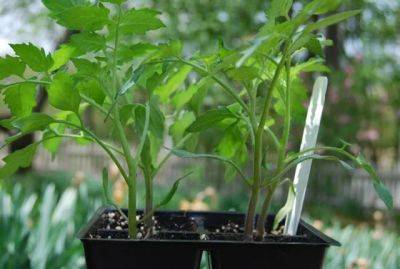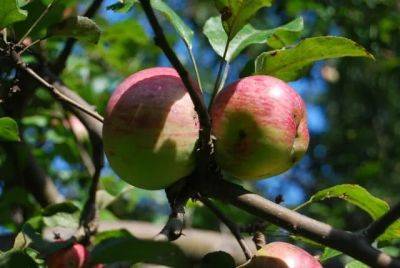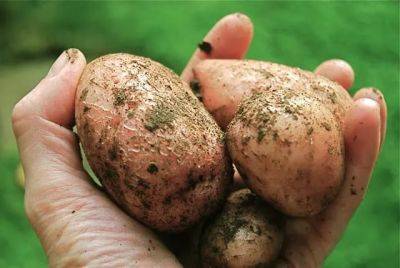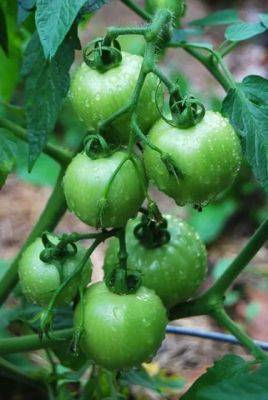How to Grow Rhubarb Find must-know tips for growing rhubarb and getting your best harvest here! Rhubarb growing guide
Edible plants Ideas, Tips & Guides

Favorite Vegetables to Grow & Preserve
Favorite Vegetables to Grow & Preserve Meg Cowden shares her favorite vegetables to grow, eat & preserve to extend her garden harvest each year. Grow vegetables you can also preserve

Are you growing these herbs? you should be. with k greene of hudson valley seed
WHEN SHOPPING the seed catalogs, I realize I’m probably more likely to consider a tomato or pepper I haven’t grown before, or some unusual annual flower, than to try some new-to-me herb. But what a shame. I need to modify that behavior and spice things up a bit.

Rhubarb Forcing Pots
Rhubarb Forcing Pots Find out how to force rhubarb in your garden with rhubarb-forcing pots here! Did you know you can force rhubarb?

Seed catalogs to love, with jennifer jewell
HO-HO-HO: It’s seed season, among other festive reasons to celebrate in December. Today I invited a similarly seed-obsessed friend, Jennifer Jewell, to help me curate some seed-catalog recommendations you might not otherwise browse, and to talk seeds in general.

Seed shopping, with lia babitch of turtle tree seed
LET THE seed shopping season begin. The 2024 offerings are being loaded into seed-catalog websites, and the earliest print catalogs are already arriving in our mailboxes, as if to help soften the separation anxiety we may feel if we’ve already put our gardens to bed for the winter.

Edible houseplants: growing citrus, with logees’ byron martin
ARE ANY OF YOUR houseplants edible? A new book by the owners of the beloved rare-plant nursery called Logee’s Greenhouses suggests that we make room for some delicious candidates among our potted indoor plants—including some of the many choices of citrus that are well-adapted to growing in containers.

What does organic mean? with linley dixon of the real organic project
WHEN YOU SHOP for food—whether produce or meat or eggs—and see a label that says “organic,” what do you think that means? At its most fundamental level, I guess I always thought it meant vegetables grown on the fields of an organic farm—like, in the soil, or animals raised in its pastures.

A garden of delights, with writer ross gay
THE WORDS joy and delight figure prominently in writer Ross Gay‘s work, and so do moments he spends in his garden and descriptions of his relationship to plants. Now is that a coincidence that the garden is a main character in his books, books with the titles “Inciting Joy” and “The Book of Delights” and the latest, “The Book of (More) Delights”?

Getting ready to stash the tender plants, with marianne willburn
IT IS NOT TIME quite yet here for what I call the mad stash, storing those non-hardy plants for the winter that we wish to keep alive for another year of service. But it is time to make some plans to do just that.

Fruitful landscapes: the start of a food forest, with michael judd
THE TERM “food forest” from the permaculture world sounds big—like if I suggested you start one, you’d probably say, “I don’t have room for a forest of any kind.”

How to grow shallots (+ some late-season succession tips), with k greene
The harvest video was on Hudson Valley Seed’s Instagram account, and one of that New York-based organic seed company’s co-founders, K Greene, talked with me about growing shallots and their more commonly grown cousin, garlic. He also shared some other ideas for succession sowing of edibles whose planting time still lies ahead—whether for fall harvest or to over-winter and enjoying in the year ahead. Read along as you listen to the Aug. 7, 2023 edition of my public-radio show and podcast using the player below. You can subscribe to all future editions on Apple Podcasts (iTunes) o

Ripening tomatoes—and saving seed, with craig lehoullier
With all that in mind, I made my annual frantic call with some urgent tomato questions to today’s guest, Craig LeHoullier in North Carolina, the NC Tomato Man as he’s known on social media, author of the classic book, “Epic Tomatoes” (affiliate link). Craig knows more about these cherished fruits than almost anyone I’ve ever met. He even shares that in live sessions each week on his Instagram account where you can ask your questions and get solid answers. I asked Craig how he’s doing and what we should all be doing to bolster a bountiful harvest and also about which fruits to save next year’s seed from anyhow and other tomato questions. Read along a

Gooseberry lore and more, with josh kilmer-purcell
ONE OF THE FIRST FRUITS that Josh Kilmer-Purcell and Brent Ridge planted when they took ownership of historic Beekman 1802 farm in Sharon Springs, New York: gooseberries. Now the city-turned-country pair are having a bumper gooseberry year—and Josh joined me on the radio to talk about that and other aspects of “The Heirloom Life,” the subject of the duo’s breakfast slide lecture in my town August 17 to help celebrate my next garden Open Day. I’ve pre-ordered a couple of copies of the “Beekman 1802 Heirloom Dessert Cookbook” (due out in September) to share with some lucky winners, so read on for a chance to win–and some gooseberry lore, recipes and more.

How i freeze green beans in red sauce, and 14 more food-storage tips
SO MANY GREEN BEANS, so little time. That’s how I always feel around now: how to keep up with the glut of one of my favorite vegetables. I don’t like them canned (all olive green and overcooked!) and they can lose crunch or get ice-encrusted when blanched and frozen plain, so I put mine up in canning jars in the freezer, doused in homemade tomato sauce. Read how I freeze green beans and many more garden-fresh goodies.

What ‘deep’ means (to a tomato)
Tomatoes will produce best if they are well-rooted, so bury them deep, right down to the topmost pair or two of leaves. They are able to root all along their stems if you plant them very deep or even sideways, in a trench. The latter goes like this: Dig a small trench about 6 to 8 inches deep and almost as long as the plant (including its rootball) is tall. Lay the plant horizontally in the trench, gently bending the top end upward, and bury all but that end with the upper pair or two of leaves. Because my soil is acidic, If I am feeling organized I give tomatoes a dose of lime in the planting hole, along with bone meal and an organic fertilizer labeled for vegetables. Some gardeners think tomatoes benefi

Apples+green tomatoes=gooey mincemeat
Up here in the Hudson Valley/Berkshires area, where the apples come in fast in fall, I make applesauce as fast as I can to freeze. A batch of mincemeat sounds about right, too, especially from a recipe minus the traditional beef suet. This one’s vegetarian.The recipe is from “Stocking Up II,” a Rodale cookbook of 1980s vintage that has since been reissued in athird version. The most-disfigured spread in my copy: the one with ‘Currant and Green Tomato Chutney,’ which uses loads of apples as well. If a waste-not, want-not mood seizes you in the not-too-distant future, here’s the recipe. (I fig

Potatoes for dinner, but not for storage (yet)
My hero James Crockett of the original vintage 1970s “Victory Garden” PBS fame said he just left the carefully dug tubers out on top of the former row for a few hours to dry a bit, then put them in burlap or mesh bags in a cool, dark place at once. Even with a few days of light exposure, the potatoes would turn green and inedible.He didn’t bother with curing the crop, exactly, which is the more conventional advice today:Dig when the soil is dry, not wet, after the foliage has died down. I normally leave them right in the ground until I am ready for them in late fall, long after the plants have faded, to reduce indoor storage time, hoping for a dry spell later in the year. First, to gauge readiness, carefully dig a hill or two of potatoes, starting about a foot outside the hill itself and working inward, since po

Harvest help: canning and freezing book giveaway
You can win one of two, three-book sets that I’ve purchased to share as prizes—no, not my old food-splattered copies, above, but new ones. Promise! All you have to do to have a chance in the truly random drawing (I’ll use the tool at random [dot] org to pick a winner) is comment below, and be a subscriber to my email newsletter. All the details are at the end of this post.Your comment should simply tell us what you like to put up for later from your garden or the farmer’s market—and it can be as simple as a sentence or include a recipe or a link to one; up to you.Tips and Tricks:Immediate ideas and tips on coping with the harvest can be had from these articles:What’s in My Freezer at Harvest Time: a Roundup of Ideas Making Pesto: Garlicky Green Ice Cubes Growing and Storing a Year of Parsley (good for many other green herbs, too) Dan Koshansky’s Hand-Me-Down Refrigerator Pickles Vegetable Curry-in-a-Hurry ‘Love Apple

Let there be sweet potatoes: how to plant them
Unlike white potatoes, where you plant a “seed potato” whose eyes are starting to sprout, with sweet potatoes you start with bits of vine called slips. Glenn Drowns of Sand Hill Preservation Center in Iowa, who lists more than 100 sweet-potato varieties in his amazing catalog, explains the origin of the word slip:“A slip is a single plant (with small roots) that is sprouted on the sweet potato root and then slipped off so that you may plant it in the garden to grow a sweet potato plant.”Each slip doesn’t look like much when it arrives—a piece of vine with some roots and maybe a leaf or two, usually a little pale and worse for the wear after days in transit. But it will quickly rebound if planted promptly according to some basic guidelines (that’s the above-ground bit of one a day or two after planting,

Garlic harvest and curing: i did something right
I used to get confused and wait to harvest the bulbs until the topgrowth was all brown, the way you let daffodils and tulips and other bulbs fully “ripen” before removing the foliage.In fact, prime harvest time is when some lower leaves have gone brown but about a half-dozen up top are still green. For me that was a week or so ago; depending on the year, it can be July or August. Carefully dig one or two heads, and check to see that the cloves are wrapped nicely in papery tissue; that the heads are really ready. To get them

Book giveaway, and my new old love: glass
Just jump in (down below in the comments) and tell me a tip, trick or insight you have to share about saving some kind of food for later use (or simply say hello; I’ll count your entry anyhow). Here’s mine:I’m using Mason or Ball jars for freezing this year, gradually phasing out most of my plastic food-storage containers. That’s a frozen test jar up top of my first 2010-vintage tomato sauce (popped out of the freezer for a moment for its portrait).Why this change?I keep reading more all the time about food and their reactions to contact with various plastics. Apparently “p

‘the family dinner’ giveaway: nourishing wisdom
THE ACTION-PACKED BOOK is constructed like the tastiest lasagna, with unexpected supporting ingredients tucked everywhere: tips for using leftovers; vegetarian-friendly substitutions; easy recipes for add-ons like dressings (will it be Tahini, Ranch, or Asian Apple Vinaigrette?); nine clever ways to use quinoa to boost protein in other dishes; conversation-starting dinner games to turn you into a deipnosophist (“a person skilled in table talk”); even variations on the act of grace. “The Family Dinner” is a collaboration between David, producer of the film “An Inconvenient Truth” and a trustee of the National Resources Defense Council (above left), and Danish-born Kirstin Uhrenholdt (right), a gifted cook whom David calls “a magical, whimsical Mary Poppins/Tinker Bell presence”—a quality that really comes through in the recipes. I felt happy—and hungry—reading every one. Bring on the Crispy, Smashed Potatoes and the Sloooooow Cooker Curry and the Vietnamese Soup in a Teapot! And don’t forget homegrown artichokes:But there are other voices, in essays and quotes

Caterpillar alert: who’s eating my cabbage and broccoli?
Though I cannot see without a hand magnifying lens if they have the requisite tiny markings, I’m betting from its overall appearance and velvety surface that this is the larval stage of the cabbage white butterfly, Pieris rapae, because I have also seen its adult stage flying around, a smallish butterfly with a couple of smudgy spots on each white wing.This article from Missouri Botanical Garden is extremely detailed on my latest visitor, also known as the imported cabbage worm, and other pests of cabbage relatives, including cabbage looper and the caterpillar of the diamondback moth. The latter two caterpillars are smooth, not velvety, among other clues to differentiating among the three.As with all caterpillars, these can be controlle

Planting do-over’s: more beans and greens
I PUT MY BEANS UP ON A PEDESTAL because they are one of the crops that’s finally producing here in the Year of Big Rains. In fact, I just planted another whole row of bush beans, along with more collards and kale, among many things. Welcome to Week 3 of the cross-blog Summer Fest 2009: Beans and Greens Week, a perfect time (if you hurry) to fine-tune the vegetable garden and eke out some produce for late summer, fall—and beyond.

Grafted tomato plants: a juicy followup
I’d first read of the tactic being used commercially, particularly in greenhouse growing, to improve yields from less-vigorous varieties like some heirlooms, and counter certain tough conditions or diseases. Now it’s available to the home gardener, too–and you don’t even need a razor blade or grafting clips of your own.The extensive article I wrote last January on tomato grafting explained all the steps, with help from a video from Ohio State.Our plants did fine; the grafts took easily, once the initial awkwardness of the slice-and-dice-and-reconnect motions were semi-mastered. Matching up rootstock (which you behead) with a scion (the top of another plant, the one you want the tomatoes from) was the

Waiting, waiting (for a ripe tomato)
I’m hoping some of my 2008 progeny will start turning red, but if not, I have a stash of green-tomato recipes. (For now I’ll hold onto them, as it’s not yet time to give up…look for them in a few weeks here, and enjoy the Oven-Roasted Tomato idea down at the bottom of this post meantime.)But really, I marvel each summer-into-fall when I stock my freezer with the harvest turned to many quarts of sauce: How did I even get one ripe fruit, considering what could have happened?No fruit. Only green fruit. Fruit with spots. Fruit with black bottoms. Fruit with cracks. Fruit eaten by marauders of every taxonomic order.Tomato leaves spotted. Or dropping off. Or eaten and just plain gone (ho

6 now-or-never late-april tasks
Asparagus-Planting Time: Asparagus tests even the most committed gardener, asking for a major feat of excavation followed by a lot of patience. Whatever kind you’re planting (hopefully an all-male strain like one of the Jersey types, which yield 20 to 30 percent more than dear old ‘Martha Washington’) you have to dig a trench about 18 inches wide and deep—no less than a foot in each direction, please. Here’s how.Less-Than-Spectacular Daffodils? They need a diagnosis, now… and a remedy, even sooner. Too much Nitrogen, too little of other nutrients, overcrowding, not enough sun or moisture: These are just some of the factors that can cause Narcissus to make leaves but few flowers. Get the lowdown here (or for all your bulb worries, including this one, try the Bulb FAQ page).Potatoes—Prep Now, Plant Soon: While prepping my vegetable garden last week, I unearthed several potatoes that eluded me last fall. Potatoes go in early, a week or two before the final frost

The tricky matter of when to harvest garlic
Don’t let its relatives mislead you. Garlic’s close cousin, the onion (Allium cepa), is more adaptable about its ideal moment to be lifted and cured. You can simply let the tops (leaves) die down right in place, delaying digging a bit to when it’s convenient. Or if you’re in a rush, move things along (assuming the bulbs are well-formed) by knocking over the foliage to urge the plants toward their finale.With garlic, though, waiting until all the leaves go brown will promote overripe bulbs whose cloves are starting to separate from one another, and the resulting un-tight heads won’t store as long. Each leaf that browns is one fewer potential wrapper to protect the bulb. (Counterpoint: Harvesting too soon can also diminish the bulbs’ shelf life in storage, and may limit the bulbs r

Tomato taste test: ‘juliet’ plum, farm-market find
The fruits of ‘Juliet’ are somewhere between a plum and a grape or cherry type of tomato— just 2 inches long or so—and borne in clusters of 12 to 18. They’re small enough that I simply halved them (above) for the skins-and-all quick tomato sauce that I freeze 40 containers of each year. I am fascinated with this rich-tasting little plum, now bubbling happily on the stove. Johnny’s Selected Seed rated indeterminate ‘Juliet’ as their most disease-resistant variety in trials (no small honor), I learned today.I have Roberto Flores, the self-proclaimed Dirtmeister at Good Dogs Farm in Ashley Falls, Massachusetts, to thank for growing the brimming bag of ‘Juliet,’ and my crafty neighbor Susan Schneider of Shandell’s, who scooped them up for me yesterday, knowing I’d been complaining about being a bag or two short. And I have the Millerton, New York, farmers’ market to thank, too—appreciation all around, friends.Have you grown ‘Juliet’ (pac

Fruit-tree pruning: a future investment
TODAY DWARF AND SEMI-DWARF varieties of apples and other fruit trees are the norm, but when the half-dozen or so apple trees that remain from the old, old orchard I garden in were planted, the norm was full-size or standard trees. Their shapes were barely visible when I bought the property, overgrown with a combination of their own unnecessary, thicket-like growth and miles of multiflora roses and grapevines.

Thinking about saving seeds, with ken greene
First, of course, you want to make sure the crop you’re considering saving seed from is open-pollinated, not a hybrid. Hybrids won’t “come true” from saved seed one generation to the next.“Start with the super-easy things,” said Ken, “like anything with a perfect flower and a pod—beans, and peas, for instance.” Perfect flowers contain both male and female parts, or stamens and pistils, such as lettuce, tomatoes, brassicas, beans; in imperfect ones, such as on squash and cucumbers, there are separate male and female flowers.“Before you even transplant your first seedling, you can start thinking about seed saving,” Ken said, and also wrote in a new article on the Seed Library blog.For beginning seed-

Pesto fest! (garlicky green ice cubes)
I cook by feel, and my recipe books don’t get off the shelf much. With pesto, in particular, it’s all “to taste” in my kitchen, and to texture: Too little oil, and the blender or Cuisinart can’t process it; too much, and it won’t really freeze nicely. For me, freezing’s the main point. I don’t want to OD on pesto in high summer, but want a steady supply year-round.I make a lot of pizza, crust and all, and I smear the unbaked crusts with olive oil, my pesto, and roasted garlic before I layer on homemade tomato sauce (stored frozen beside the pesto) and the cheeses.An “ice cube” or two of defrosted pesto also makes a welcome spread on baguette or crackers with olives and cheese and other snacking things, when guests stop by. Nothing’s easier as a seasoning when m

Overwintering rosemary, indoors and out
Start with a cold-hardy cultivar if you plant to try to overwinter rosemary in the ground in other than a truly frost-free hardiness zone. ‘Arp’ is the best known, along with ‘Hill Hardy’ (also known as ‘Madalene Hill’ after the late herb gardener from Texas; ‘Arp’ was her discovery, by the way, the result of her search for plants that could take not extremes of cold but the Texas heat). Oregon-based Nichols Garden Nursery’s owner touts ‘Nichols Select’ as being a toughie, too.It’s “as hardy as any I’ve grown, probably Zone 6B, and the flavor is terrific,” Rose Marie Nichols McGee in an interview one spring. “It was planted 25 years ago at our home and survived minus-7 degrees F once. I think this is your best for a long-lived rosemary.”The U.S. National Arboretum website trialed many cultivars, and how they fare on all scores. Even in USDA Zone 7A,

Hungry? come visit my kitchen on the kitchn blog
ILOVE TO COOK FROM MY GARDEN, but it never occurred to me that any *real* cooks would be stopping by. Sara Kate Gillingham-Ryan, cookbook author and proprietor of The Kitchn blog on the giant Apartment Therapy network, and her husband, AT founder Maxwell, were the first bloggers to wish me well online when I left my career to live in my garden in 2008, and I’d said “come by sometime if you’re in the area.” And guess what? The result was a visit filled with great conversation and some of my simple-but-fresh food, including a pizza (my specialty), and now a lovely story and slideshow on Sara Kate’s blog.

Succumbing to the ‘hudson valley seed library’
Hudson Valley Seed Library’s motto is “Heirloom Seeds With Local Roots,” and they specialize in heirloom seed “rooted in the history and soils of the Northeast.” The co-founders’ goal for their first-year business is to grow all their seed locally by 2014, much of it on their land in Accord, NY. Ken Greene and Doug Muller want to rekindle the knowledge and spirit of seed-saving at a local level, “to close the loop from seed to seed that is necessary for a truly local sustainable local food system,” they say.I think it’s a great reminder for all of us, wherever we live, especially right now: We can save some of our seeds from year to year, and also share it. Fostering this kind of consciousness and engagement is what the Seed Library is excited about.Anyone anywhere can order from their web-based catalog, and there’s a way to get more involved: Join the Seed Library, for $20 a year, which includes 10 packs of seeds (plain wrappers, not the fancy ones a
Popular Topics
Our site greengrove.cc offers you to spend great time reading Edible plants latest Tips & Guides. Enjoy scrolling Edible plants Tips & Guides to learn more. Stay tuned following daily updates of Edible plants hacks and apply them in your real life. Be sure, you won’t regret entering the site once, because here you will find a lot of useful Edible plants stuff that will help you a lot in your daily life! Check it out yourself!
